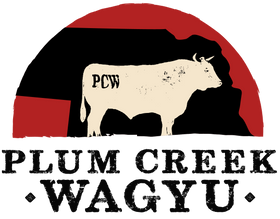Wagyu vs. Kobe Beef: What’s the Difference?
When it comes to premium beef, two names stand out: Wagyu and Kobe. While they’re often used interchangeably, they’re not the same. Understanding the distinctions can help you appreciate the unique qualities of each and make an informed choice for your next indulgent meal.
What is Wagyu?
"Wagyu" translates to "Japanese cow," and it refers to four specific breeds of cattle: Japanese Black, Japanese Brown, Japanese Polled, and Japanese Shorthorn. Wagyu cattle are renowned for their rich marbling, which results in unmatched tenderness, juiciness, and flavor. This luxurious fat distribution is due to meticulous breeding, a high-energy diet, and a stress-free environment.
Wagyu beef is produced worldwide, including in Japan, the United States, and Australia. Each region’s beef varies slightly based on factors like feed, climate, and breeding practices. However, the term "Wagyu" is broad and encompasses a variety of beef products within these breeds.
What is Kobe Beef?
Kobe beef is a specific type of Wagyu beef that comes from the Tajima strain of Japanese Black cattle, raised exclusively in Japan’s Hyōgo Prefecture. The name "Kobe" is protected by strict regulations, and only beef meeting rigorous criteria can bear the Kobe name.
To qualify as Kobe beef:
-
The cattle must be purebred Tajima Wagyu.
-
They must be born, raised, and slaughtered in Hyōgo Prefecture.
-
The beef must meet strict marbling and quality standards, typically achieving an A4 or A5 grade.
-
It must be certified by the Kobe Beef Marketing and Distribution Promotion Association.
This exclusivity makes Kobe beef rarer and more expensive than general Wagyu.
Key Differences
-
Origin: All Kobe beef is Wagyu, but not all Wagyu is Kobe. Wagyu can come from various regions and breeds, while Kobe is strictly tied to Hyōgo Prefecture and the Tajima strain.
-
Grading Standards: Kobe beef adheres to some of the highest grading standards in the world, ensuring exceptional marbling, flavor, and texture. While Wagyu beef is also graded, the standards and quality may vary depending on the producer and region.
-
Availability: Kobe beef is much rarer than Wagyu. In fact, only a limited number of certified Kobe beef cattle are slaughtered annually, making it a delicacy even within Japan.
-
Price: Due to its rarity and stringent requirements, Kobe beef often commands a higher price than other Wagyu varieties.
Similarities
Both Wagyu and Kobe are prized for their:
-
Exceptional marbling, which delivers a buttery texture and rich flavor.
-
Unique fat composition, high in unsaturated fats, which melts at a lower temperature and enhances the taste.
-
Meticulous care in breeding, feeding, and raising the cattle.
How to Choose Between Wagyu and Kobe
When deciding between Wagyu and Kobe, consider your priorities:
-
If you want the pinnacle of exclusivity and tradition, Kobe beef is the ultimate choice.
-
If you’re looking for a luxurious beef experience with more options and variety, Wagyu offers plenty of outstanding cuts and price points.
Conclusion
While Wagyu and Kobe beef share a heritage of excellence, their differences lie in origin, grading, and exclusivity. Both offer a dining experience that’s second to none, making either choice a celebration of culinary luxury. Whether you’re indulging in Wagyu or splurging on Kobe, you’re in for an unforgettable treat.
Related Posts
The Art of Gift Giving: Why Wagyu Makes the Perfect Present
When it comes to gift-giving, few presents are as luxurious and memorable as premium Wagyu beef. Perfect for housewarmings, holidays, and special occasions, Wagyu transforms any celebration into an extraordinary experience. From curated gift boxes to custom selections, giving the gift of Wagyu is a thoughtful way to treat loved ones to a meal they’ll never forget.
From Farm to Table: Why Premium Beef is Worth the Investment
Premium Wagyu beef is far more than just a meal—it’s a luxury experience that elevates every dining occasion. From the meticulous care taken in raising Wagyu cattle to the rich, buttery flavor that melts in your mouth, Wagyu offers an unparalleled dining experience that’s worth the investment. In this post, we explore why Wagyu is not just a cut of meat, but an experience to be savored and celebrated.
Fusion Flavors: Wagyu in Asian, Mexican, and Italian Cuisine
Wagyu beef isn’t just for traditional Japanese dishes—it can be a game-changer in cuisines from around the world. Whether you're adding it to a hearty bowl of ramen in Japan, spicing up tacos in Mexico, or giving your Bolognese a luxurious twist in Italy, Wagyu's rich marbling and tender texture enhance every dish. In this post, we dive into how you can incorporate Wagyu into Asian, Mexican, and Italian cuisine for a fusion feast that will wow your guests.
The Ultimate Wagyu Tasting Party: Host Like a Pro
Hosting a Wagyu tasting party is a surefire way to impress your guests and create an unforgettable culinary experience. With the right selection of cuts, perfect wine pairings, and attention to the details, you can host like a pro and allow your friends and family to indulge in the luxurious world of Wagyu beef. From Ribeye to Filet Mignon, this tasting guide will walk you through every step to ensure your event is a delicious success!
Leftovers with a Twist: Creative Recipes with Wagyu Trimmings
Transform Wagyu trimmings into culinary masterpieces! From breakfast hash to pho, these creative recipes make every bite of Wagyu unforgettable.
5 Simple Sauces to Elevate Your Wagyu Steak
Enhance your Wagyu steak with five simple, mouthwatering sauces! From a rich red wine reduction to a zesty chimichurri, these recipes are sure to elevate your next meal.








